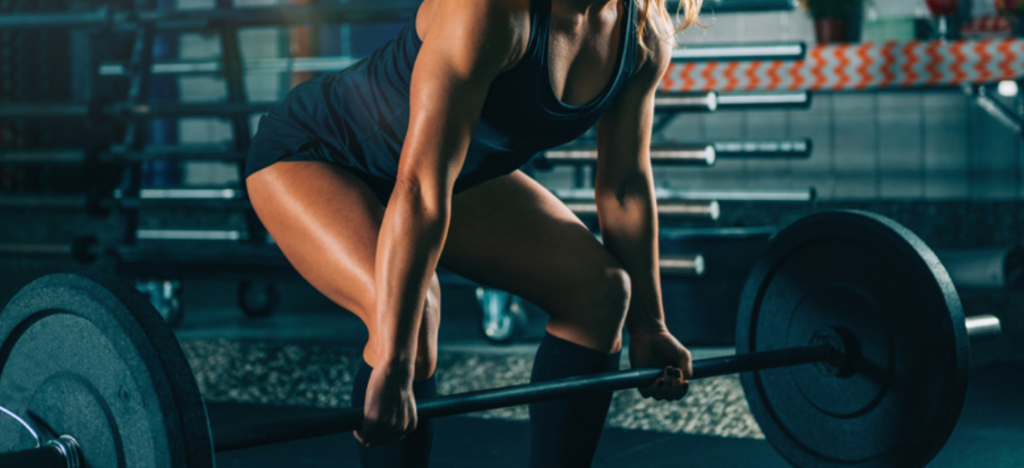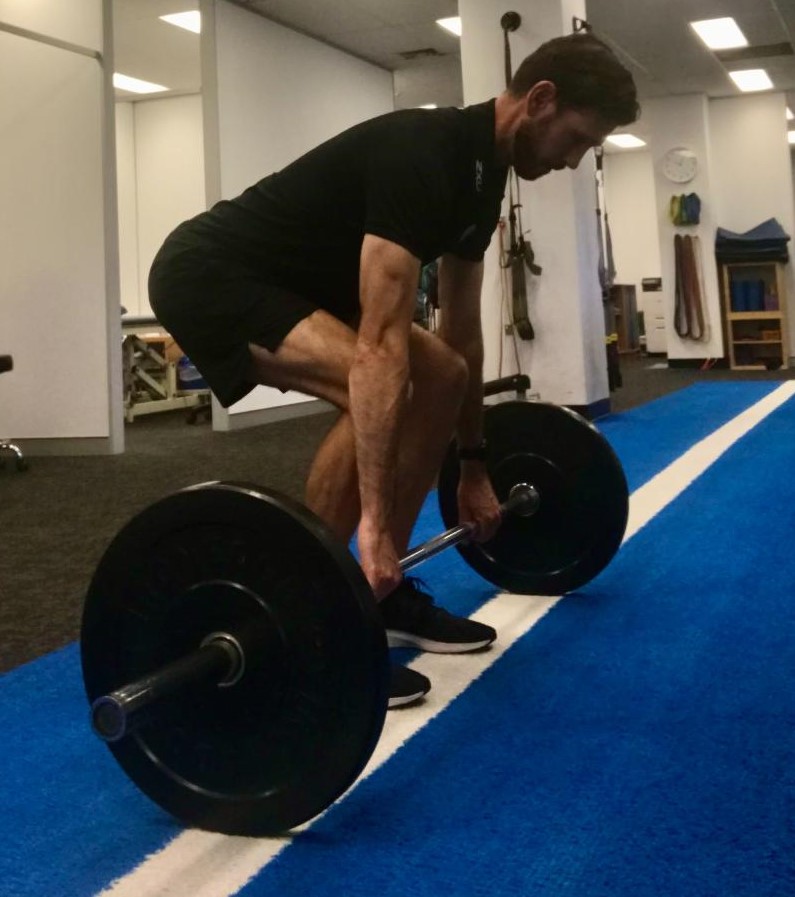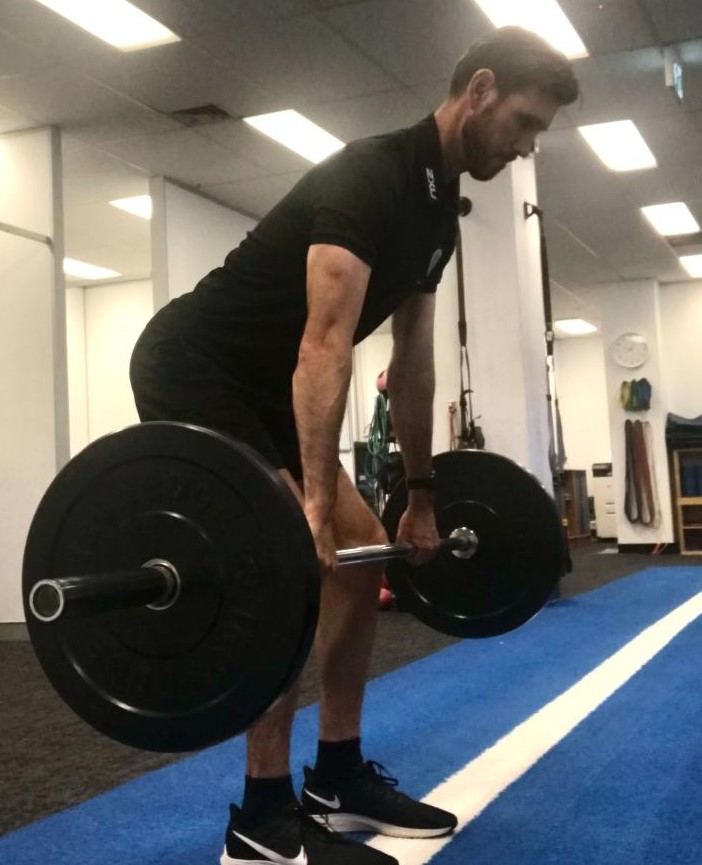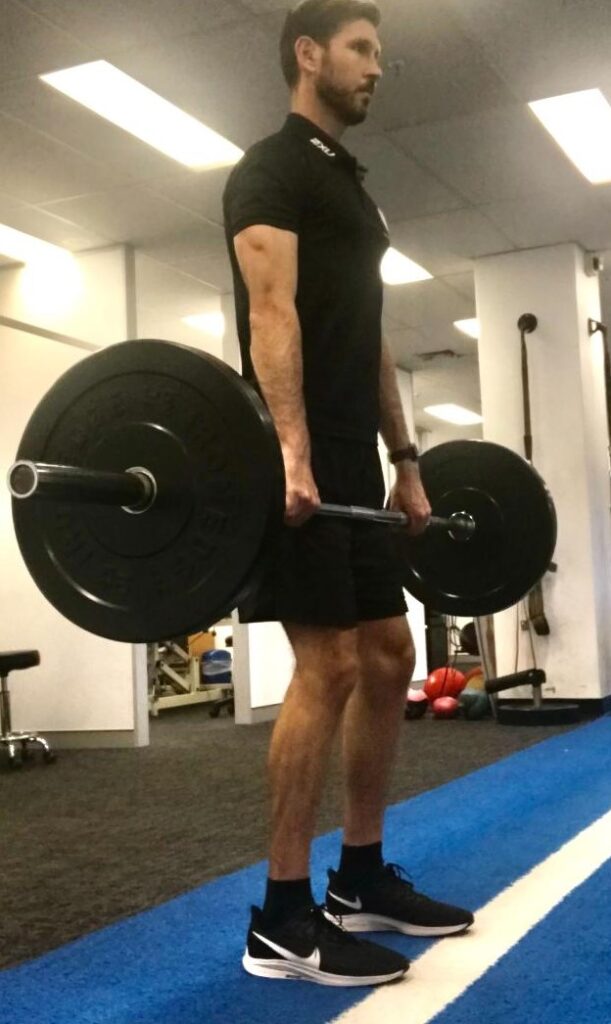
Deadlift – What Is It?
The deadlift is a weight training exercise in which a kettlebell, loaded barbell or bar is lifted off the ground to the level of the hips, torso perpendicular to the floor, before being placed back on the ground. It is one of the three powerlifting exercises, along with the squat and bench press.
The Deadlift works the; gluteus maximus, hamstrings, quads, trapezius, lats, and erector spinae. The quadriceps, hamstrings, adductor magnus, and soleus serve as synergists during the exercise (synergist muscles are muscles that work together to create a movement).
How Does The Deadlift Help Runners?
Running involves both vertical and horizontal movement. The deadlift trains the horizontal pathway, whereas the squat trains the vertical pathway. The deadlift strengthens the “posterior chain”, i.e. the muscles along the back of your body, and these are the muscles that help extend (straighten) your hip and pull you forwards over your leg as it contacts the ground.
As well as being great for strengthening your back muscles, deadlifting strengthens your glutes and hamstrings. This helps you to apply more force as your foot strikes the ground and your leg moves into extension to propel you forward. Basically the deadlift exercise helps strengthen the muscles that push you forwards as you run, allowing you to run faster and longer.
Deadlifting Puts Less Strain On Your Knees Than Squats
Many people are already quad dominant, meaning that they tend to overuse their quads as they run. Deadlifting will off-set this because the deadlift takes load away from the quads and knees and helps strengthen the back, glutes and hamstrings (posterior chain muscles).
Recruiting your posterior chain muscles more during strength training in the gym helps increase the neural connection between your brain and those muscles. This means that not only do you increase the strength of some of the most important running muscles, you also help train your brain to use them more when you run.
Hold Good Running Form For Longer
Deadlifts strengthen your core, including your trunk and the muscles around your spine. Strengthening the back side (posterior chain) of your body will help you stay upright and hold better posture while running, among other things.
Deadlifting to Prevent Running Injuries
Deadlifting, like most strength exercise programs, has a dual purpose. As well as helping improve your running performance, its also helps minimise running injuries. Put simply, if all others things are equal, the stronger you are the less likely you are to get injured. Strong muscles are more resilient, better able to absorb stresses during running training, and help maintain proper load distribution by allowing you to achieve and maintain correct running form. So, if you seem to constantly battling niggles or having your running training interrupted by injuries, maybe you need to get into the gym and get strong! And the deadlift should be a foundation part of your strength program.
How To Deadlift Correctly

1. The Setup
– Set behind the bar with it touching or nearly touching the legs.
– Begin by hinging at the hips and knees, setting your weight predominantly in the heels while maintaining flat feet
– Maintain the spine long and straight as the hips hinge back, Don’t allow the knees to track forwards over the toes
– Grip the bar outside of the legs
– Depress the shoulders away from the ears to load the lats and to generate force throughout the spinal erectors

2. Drive Phase
– Take a deep diaphragmatic breath and hold it in during the movement, creating an outward pressure on the core to further stabilize the lumbopelvic hip complex and core throughout the motion
– Keep the muscles of the back contracted tightly in order to maintain a safe posture throughout the motion
– Drive up and forward with the hips and legs to stand erect and lift the bar

3. Lockout
– This is the finish of the motion. This requires being upright with a neutral spine and forceful hip extension to engage the muscles of the lumbar spine, abdomen and glutes in co-ordination
– Drive the hips completely into the bar
– Contract the glutes and abs to finish the movement with the pelvis in a neutral position
Deadlift Variations
There are many variations of the deadlift, each with it’s own purpose and benefits. Some target certain muscles more specifically, some allow you to work around injury or movement limitations, and some are to push your technique in certain areas. Some of the variations we use most often are;
– ROMANIAN DEADLIFT
– STIFF LEGGED DEADLIFT
– TRADITIONAL DEADLIFT
– TRAP BAR DEADLIFT
– SINGLE LEG RDL
– SUMO DEADLIFT
– GOODMORNING
– RACK PULL INTO TRIPLE EXTENSION
If you would like to have your deadlift form checked, or for any other information about the benefits of deadlifting for runners, please feel free to contact us.

